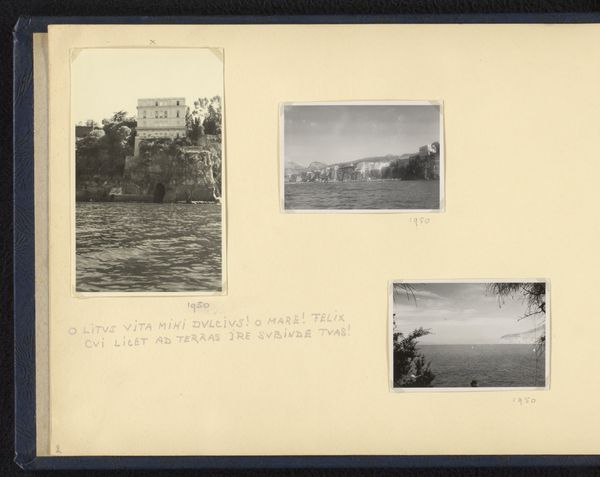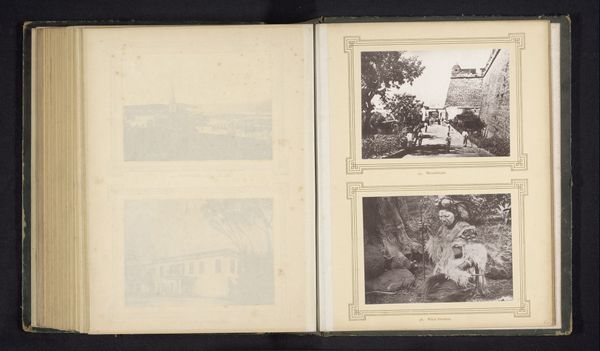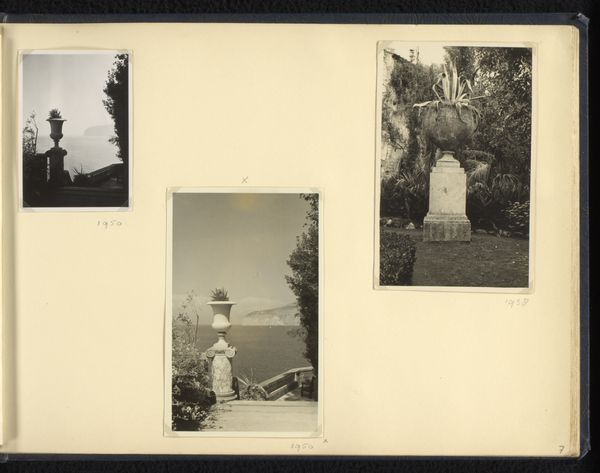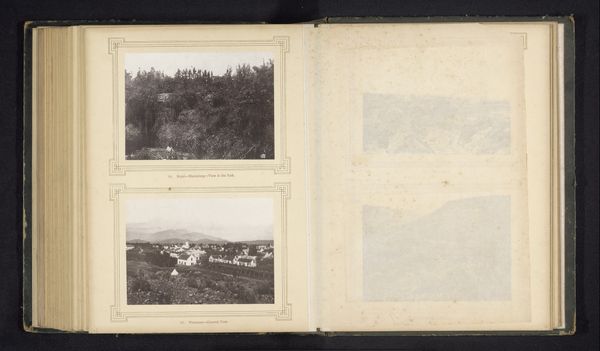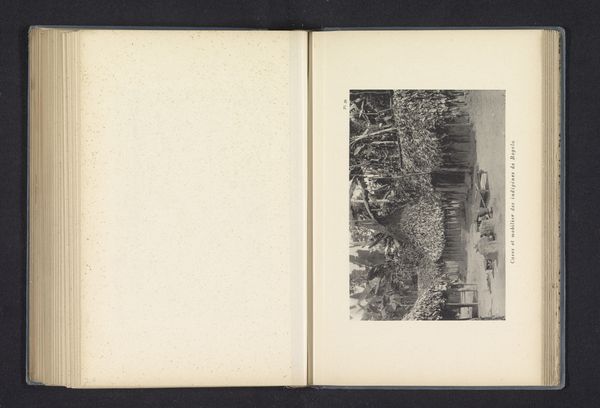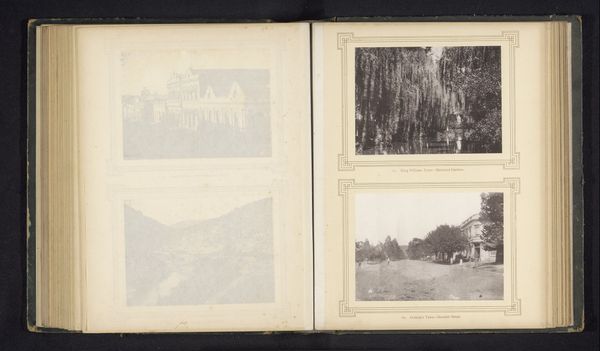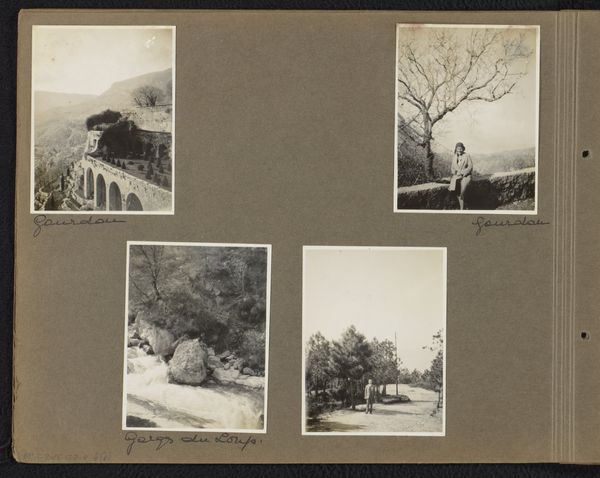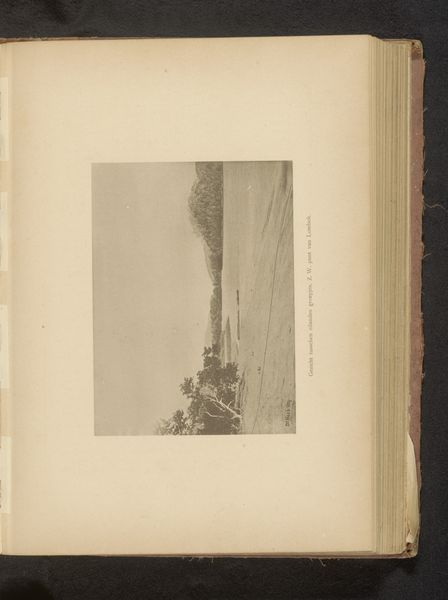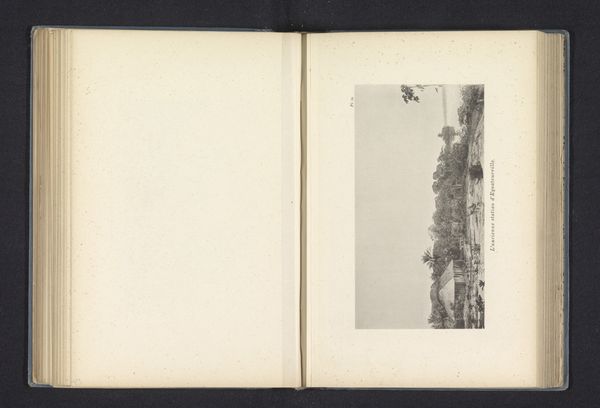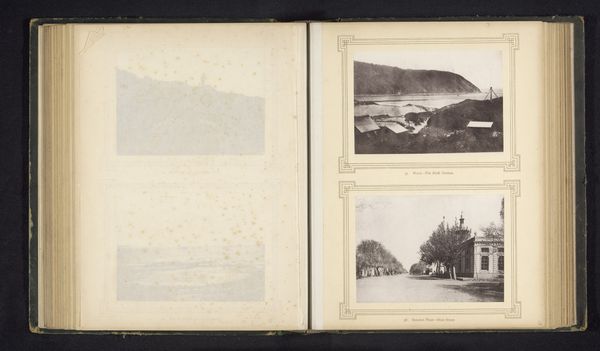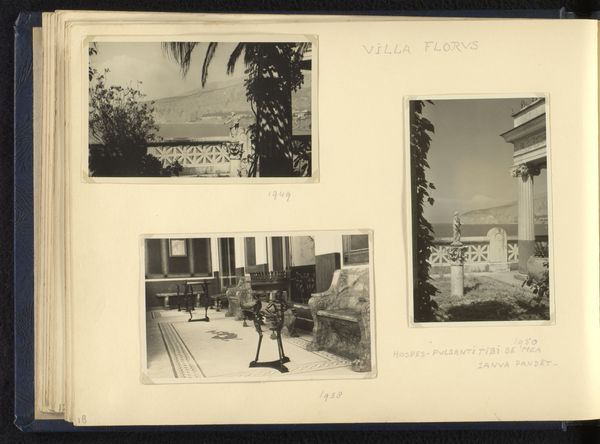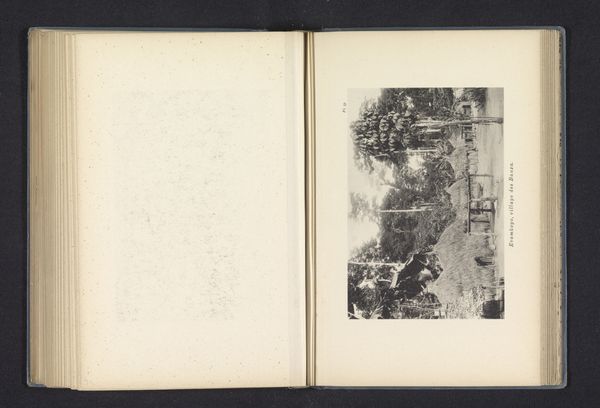
Drie foto's van de tuin van Villa Tritone met op de achtergrond de Golf van Napels 1938 - 1950
0:00
0:00
print, photography
#
garden
# print
#
landscape
#
photography
#
cityscape
Dimensions: height 232 mm, width 336 mm
Copyright: Rijks Museum: Open Domain
Editor: This photographic print, titled "Three Photos of the Garden of Villa Tritone with the Gulf of Naples in the Background," was taken by Norbert van den Berg between 1938 and 1950. I notice a distinct separation between the meticulously curated garden and the expansive, somewhat wilder seascape beyond. How do you interpret that contrast? Curator: The contrast is crucial. Gardens like this often reflect an impulse to control nature, mirroring social hierarchies and the desire to impose order. The gaze of the photographer and, by extension, the viewer is directed from this cultivated space outward, a possessive act onto the landscape and the cityscapes it holds. What does it mean to frame a place like Naples through the lens of a privileged garden? Editor: So you're saying the garden isn't just a pretty backdrop? Curator: Precisely. Think about who inhabited these villas, who had the means to create such spaces, especially during those years. Consider the political climate and the social disparities. These gardens were not neutral territories; they represented power and exclusion. What stories might the absence of certain people, certain classes, tell? Editor: That's a perspective I hadn't considered. I was just seeing a nice view! Curator: These images invite us to critically examine the historical and social forces at play. Even in ostensibly ‘beautiful’ scenery, we should ask, “Whose beauty is being represented, and at whose expense?” Perhaps it's a starting point for broader questions of land ownership and accessibility. Editor: I guess these aren’t just simple landscapes, they hold so much more. Thank you. Curator: My pleasure. Art gives us that possibility of reflecting on things with more depth.
Comments
No comments
Be the first to comment and join the conversation on the ultimate creative platform.
